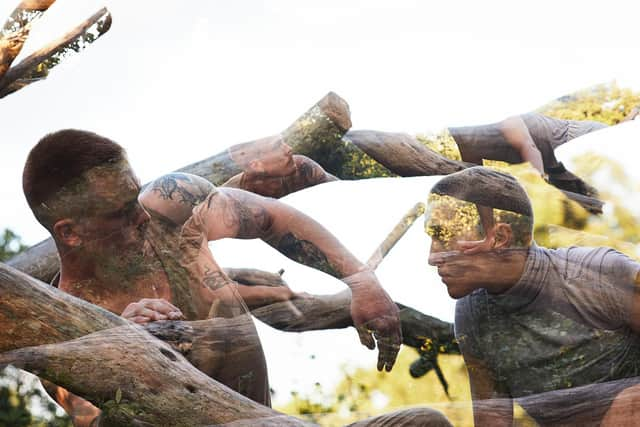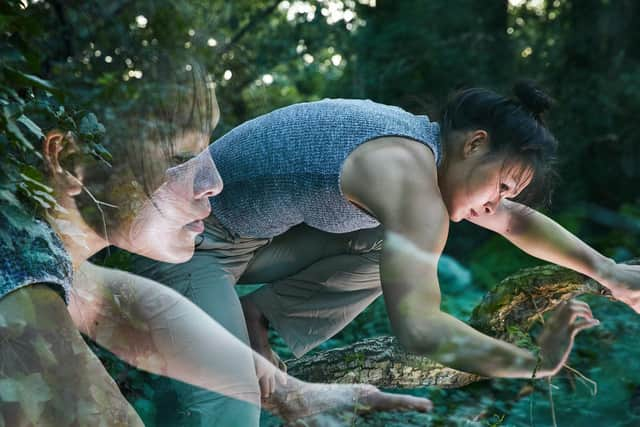The Jungle Book reimagined gets down to bare necessities with themes of climate change, migration and the refugee crisis
In the late 1800s, they read it in a magazine. In the 1970s and 80s, they sang along to a Disney animation. And in the 1990s and beyond, they watched live action and CGI versions in film and television. Regardless of what was going on in the world around them, Rudyard Kipling’s The Jungle Book has been a constant in children’s lives for over a century. The inter-play between humans and animals, the themes of law and order, of freedom and connection have meant different things at different times. And now, almost 130 years after Kipling’s tales were first serialised, choreographer Akram Khan has created a Jungle Book for the children and families of today.
Back in 1893, young Mowgli’s primary concerns were learning how to get along with everyone and find enough food and water. At no point did he worry whether there would be a planet left for him to live on. With today’s children reminded on a daily basis that life as we know it may look very different by the time they reach their grandparent’s age, Khan is sending out a warning message about climate change, but also a signal of hope. Because if we’re clever enough to have caused this mess in the first place, we’re clever enough to clean it up.
Along with a talented team of co-creatives, including playwright Tariq Jordan, composer Jocelyn Pook and a group of international animators, Khan has reimagined Mowgli as a refugee. Separated from their family in a world devastated by the climate crisis, they turn to the natural world for comfort, safety and, ultimately, a solution. A former primary and secondary school teacher, Jordan is well versed in communicating with young people.
“For me, the show is saying to children ‘we are listening to your voices’, because they seem to be the ones who are speaking truth to power,” he says. “We’ve had young children speaking at the UN and talking about issues they’re affected by, and I think we need to listen to them a lot more. That’s where we’re going wrong, we disregard the concerns of children.”
At the start of 2021, Jordan was tasked with re-writing The Jungle Book as a stage play, keeping the original characters but swapping out some of Kipling’s storylines for modern-day concerns. Then, with all the other collaborators playing their parts – music, animation and, of course, Khan’s choreography – his words were edited down to create a voiceover script for the animals. Set in more of an urban jungle than a tropical one, the action still centres on Mowgli meeting Baloo the bear, Bagheera the panther, the Bandar-log monkeys and so on, only this time they’ve got more pressing things on their mind.
“I hadn’t read Kipling’s book before this project came along, because Disney has taken over and I’d seen that version in my childhood,” says Jordan. “So I went back to the original and realised how different it is and that Disney took a lot of liberties. But Kipling was an imperialist and very much a product of his time, and there were certain new themes we wanted to include in the work.
“On the surface, bringing climate change, migration and the refugee crisis into The Jungle Book feels quite difficult. But all the characters from the book are in the show and you start asking yourself well who would these animals be today? I’d recently seen some videos of dancing bears, and I thought that could be Baloo. And when I looked at Bagheera’s character, I thought about having recently watched Tiger King. People impound these magnificent creatures and keep them as pets, almost as if it’s a sign of mankind’s strength that they can dominate these beautiful animals.”


One of ten dancers bringing Khan’s vision to life is Holly Vallis, a recent graduate from Rambert School of Ballet and Contemporary Dance. Playing the part of Bagheera, along with several other animals during the show, meant research was an essential part of the process. “We spent up to an hour each day by ourselves, watching videos of the animal we were playing,” says Vallis. “But then once we began to create the show, things started to develop naturally. So we began moving in a more heightened physical state, being a monkey that’s dancing rather than really specific monkey movements.” Because, of course, despite the dancers’ animalistic state, there are still performing the choreography of Akram Khan – one of the most celebrated dancemakers of his generation.
Khan is no stranger to family shows, having created Chotto Desh and Chotto Xenos in recent years, both re-workings of productions originally created for adult audiences. This time, however, the intention was always for younger audiences to watch and enjoy Jungle Book Reimagined. Is that something the dancers keep in mind when performing the piece?
“I’d say so, yes,” says Vallis. “We definitely have a responsibility when we’re performing to deliver quite heavy subject matters. But we all care about the themes in the show, which is really important, so it’s quite internal. It’s not necessarily something you’ll see but hopefully it’s something that you’ll feel. There’s a kind of gentleness in how we leave what we’ve laid out, what we’ve offered the audience, it’s quite subtle.”
Aimed at children aged eight upwards and their families, this imaginative piece of dance-theatre may be a far cry from the Disney version, but entertains both adults and children in its own special way. What does the company think audiences will take home with them after seeing the show?


“Hope – that’s a big one,” says Vallis. “Because I feel that Mowgli is a representation of hope for humans. Right at the end of the show, Hathi the elephant says ‘we have to let Mowgli go, because Mowgli is the person who’s going to teach the humans how to listen’. I think we have to have the capacity to believe things will get better, otherwise they never will. And that’s what it feels like with this show, which in one way is a telling off for people, but in another way is saying ‘but we can find a way!’. So hopefully it’s encouraging.”
Striking a balance between telling it like it is and evoking a love for the natural world was important to Jordan when he was writing the script. “I’m hoping the show will re-engage us with listening to nature, because climate change is not a fantasy it’s very much a reality and there are people in the world who are facing the full force of it right now,” he says. “One of the lines in the show is that we are guests on this planet who are just passing through, the earth will still be here when we’re gone. So we’re asking how do you want to be remembered? If this was a house party you’d been invited to and nature was your host, would you treat it in such a way? What we’ve done is unforgivable but we have to make amends, or at least try as much as possible for the next generation’s future.”
Jungle Book reimagined, Edinburgh Festival Theatre, 25–28 August. www.eif.co.uk